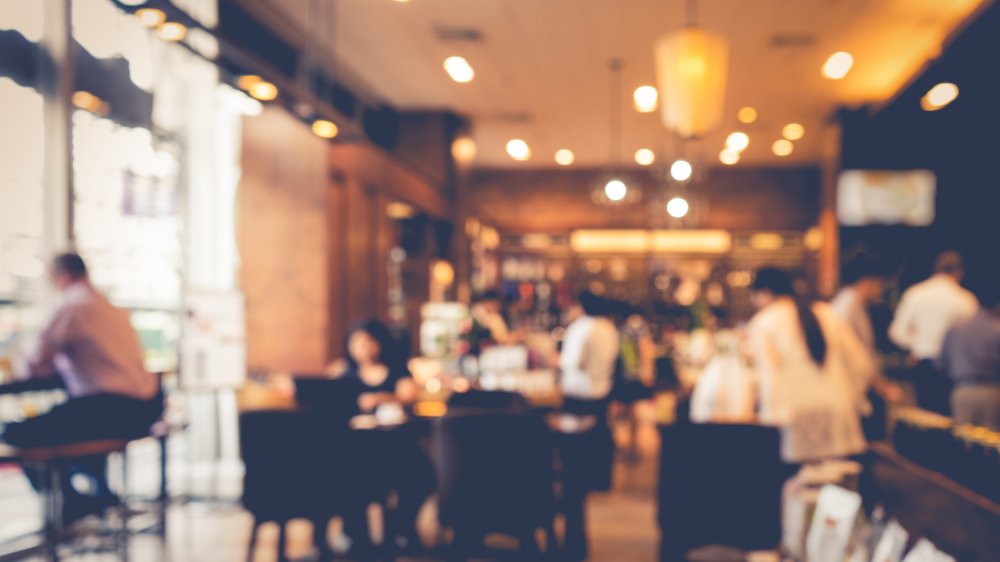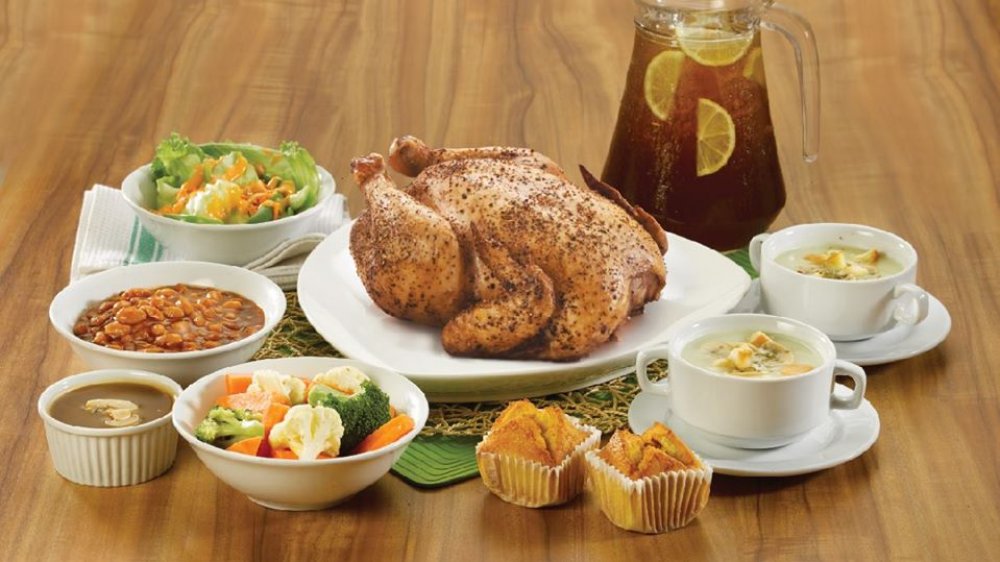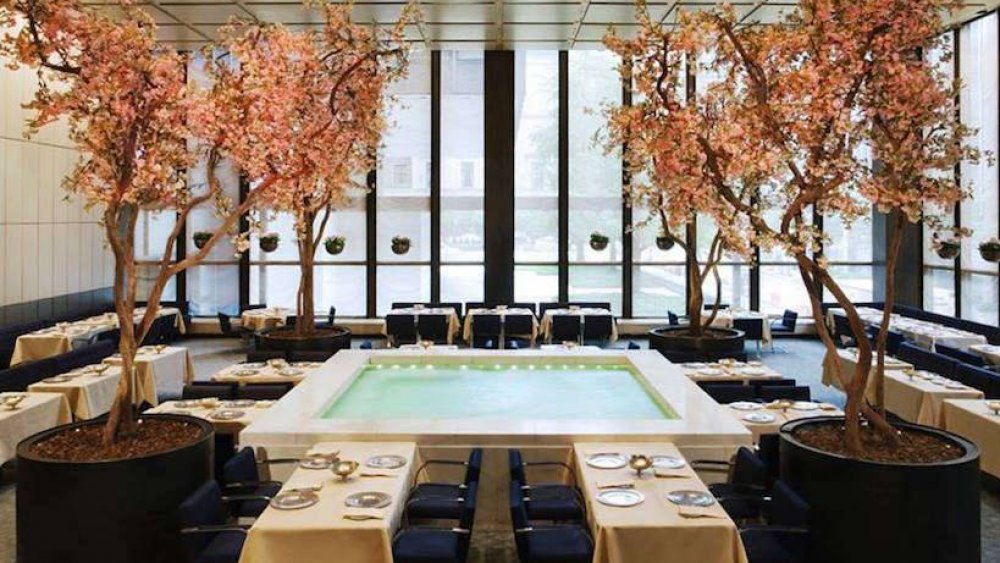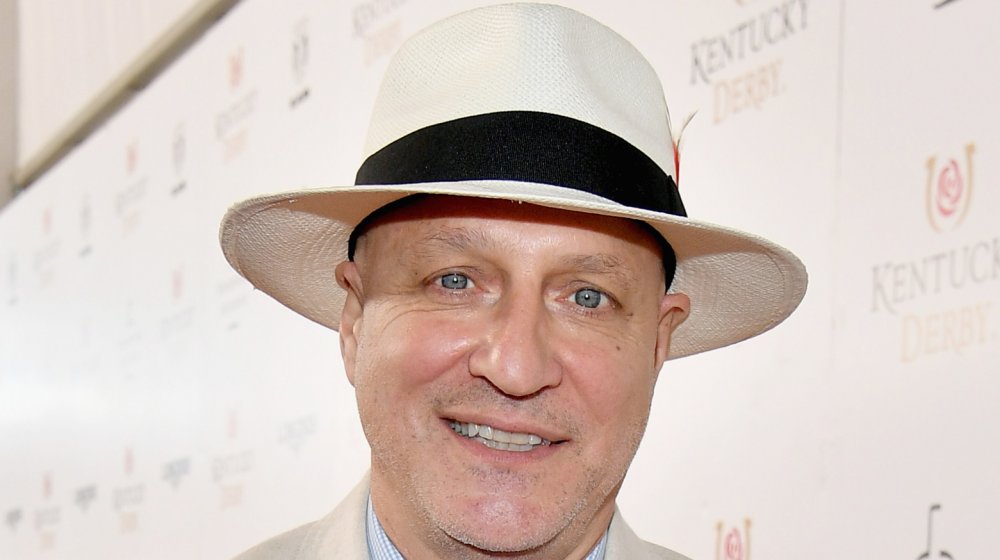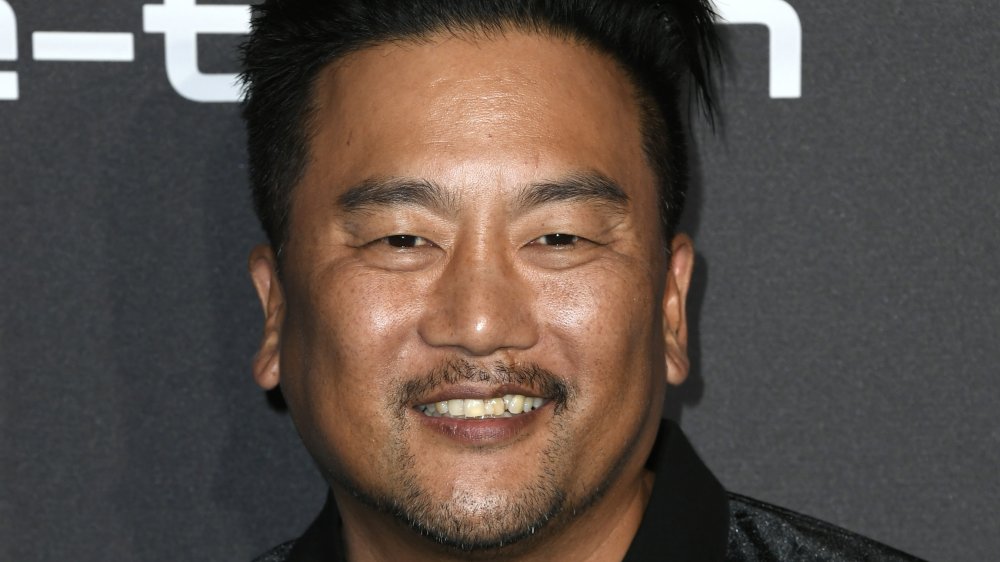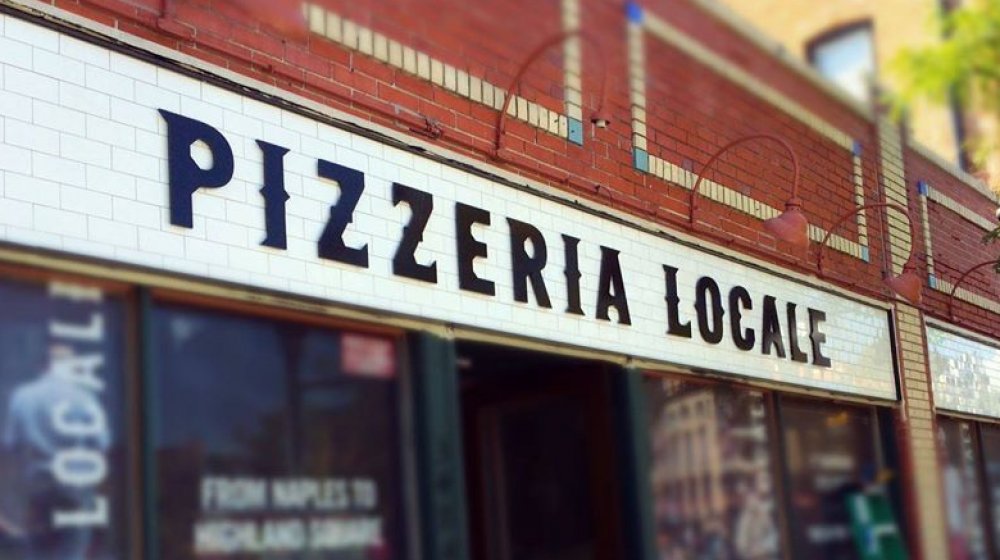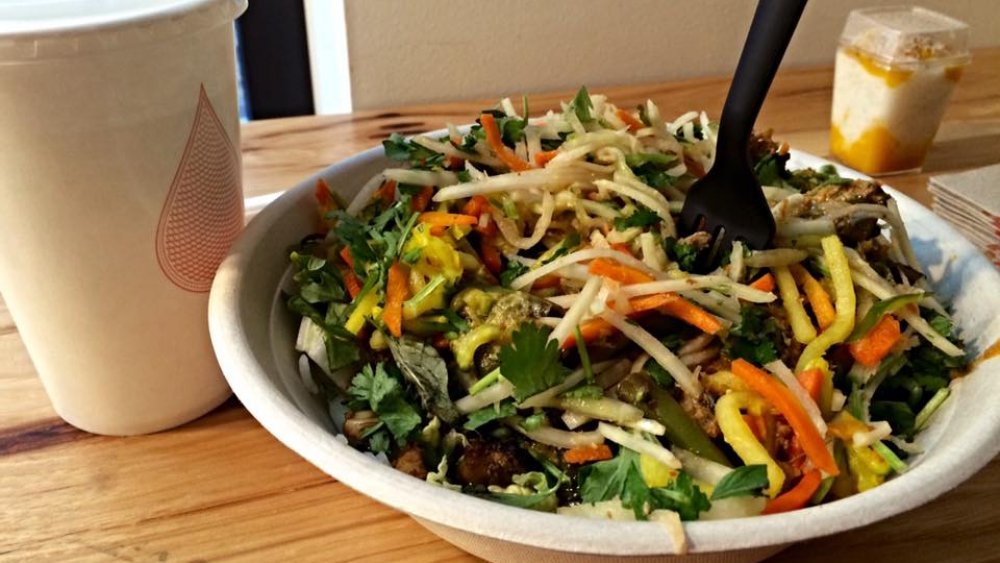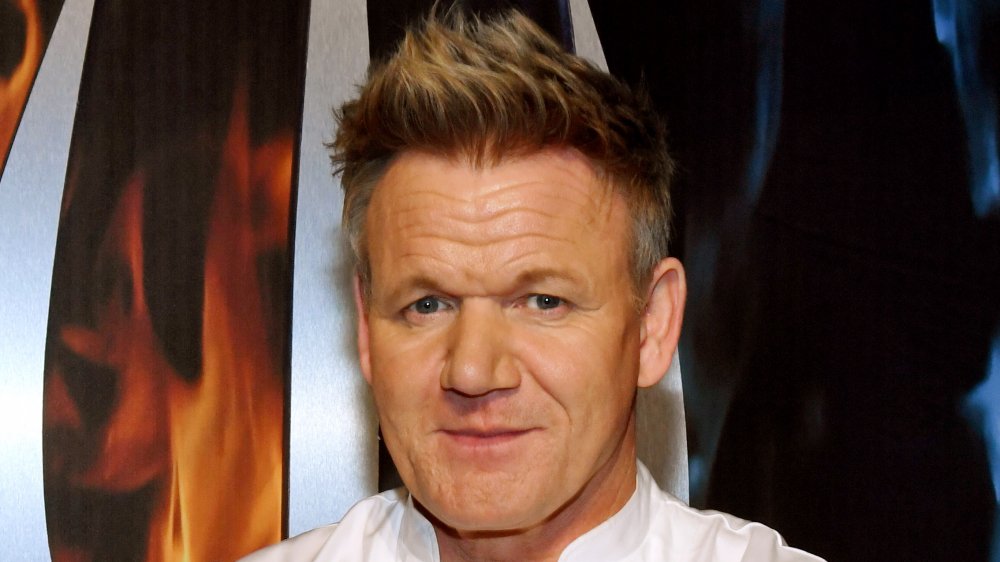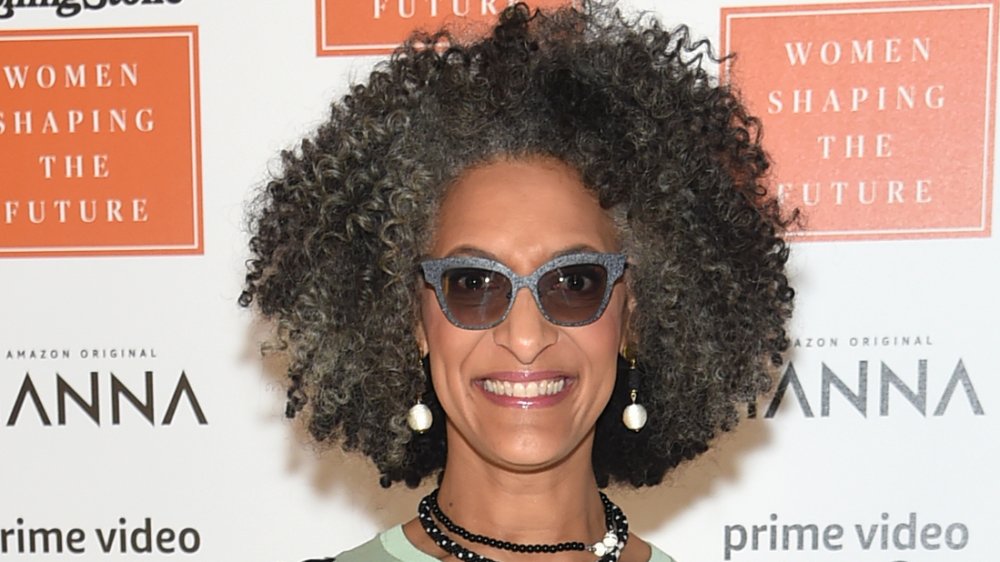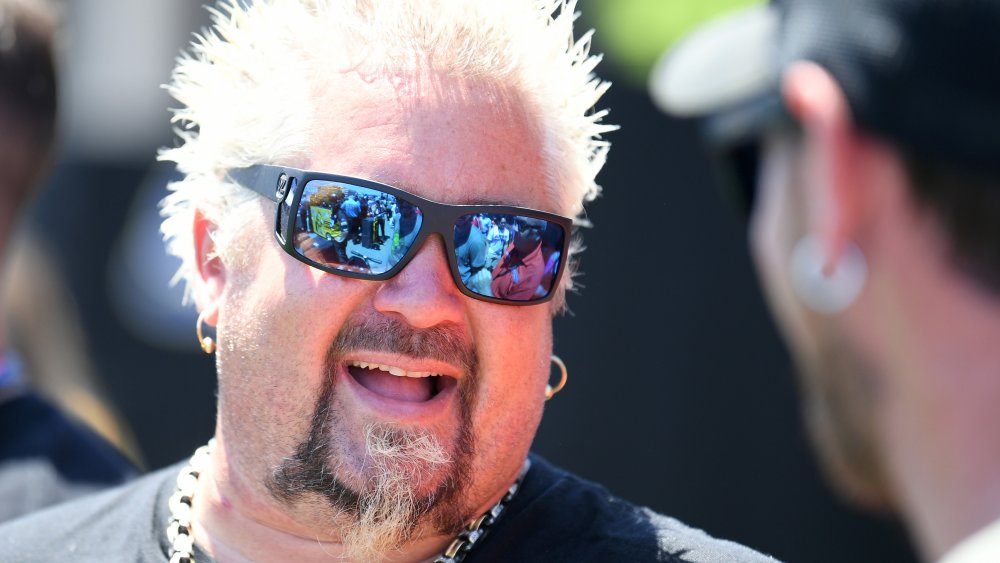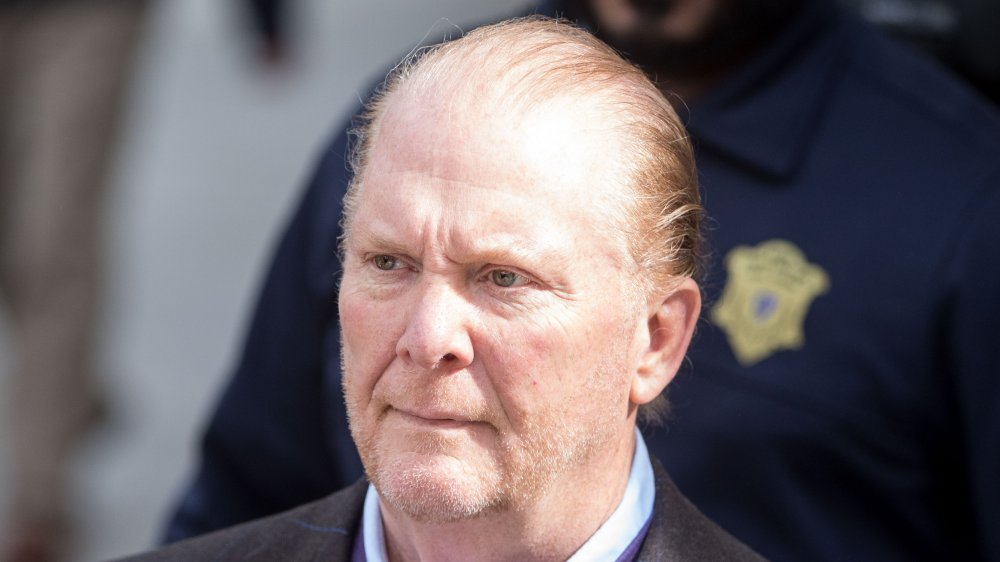The Real Reason These Restaurants Disappeared In This Past Decade
Owning a restaurant is no easy business. The food industry is notoriously hard to break into, and it's even harder to create a successful eatery, which is why some of your favorite restaurants disappeared in the past decade.
In 2017, more than 10,000 independent restaurants closed in the US, while chain restaurant numbers remained flat. When restaurants open, a large number fail after just the first year — and 70 percent of those that do make it past year one close in the next three to five years.
Your favorite chain restaurants aren't immune to the cutthroat restaurant industry, though. Even once-popular chains can go belly-up, and even restaurants helmed by the biggest celebrity chefs in the business can fail to thrive.
While reasons for restaurant failure vary, some of the most common reasons restaurants close include not having enough start up capital, having too much competition, building a restaurant in a less-than-ideal location, having a partnership go bad, and having troubles with staffing and inventory.
Add to that the fact that most restaurants have a profit margin of three to five percent, and it's not too surprising that these eateries have gone belly-up.
Kenny Rogers Roasters
When you get a craving for take-out chicken these days, chances are you'll head to KFC, Popeyes (the allure of their delicious chicken sandwich is too strong to resist), or Boston Market. But beginning in the '90s, there was another chicken option on the market – Kenny Rogers Roasters. The chain was started by country singer Kenny Rogers, who was inspired by John Y. Brown's success with KFC, and who wanted to provide a healthier chicken option to hungry diners.
Kenny Rogers Roasters specialized in rotisserie chicken, and at one point was so famous that it was even featured in an episode of Seinfeld. But the last U.S. location of the once-popular chicken chain, which at one point in the 1990s had more than 300 restaurants, shut its doors in 2011.
However, even though Kenny Rogers Roasters has disappeared from the U.S. market, it, along with other formerly popular fast food chains like Big Boy, has found a second life in Asia.
There are now more than 400 Kenny Rogers Roasters spread accross the Phillipines, Malaysia, China, and India, and the chain is still expanding. Kenny Rogers Roasters may have disappeared from the USA in 2011, but those who still crave a rotisserie chicken meal with all the fixin's just have to book a plane ticket to the other side of the world to get their fix.
The Four Seasons Restaurant
The Four Seasons restaurant, located inside the iconic Four Seasons hotel in New York City, opened up in 1959, and for decades was one of the fanciest spots in town to catch a meal. It was frequented by celebrities like John F. Kennedy (he dined there on his 45th birthday, right before Marylin Monroe's famous "Happy Birthday Mr. President" performance), Martha Stewart, Barbara Walters, Norman Mailer, Warren Buffet, and Nora Ephron. It seems like such a famous restaurant would never face the same perils of other businesses in the industry, but the Four Seasons Restaurant closed in 2016 after a lost lease forced the owners to relocate.
The restaurant reopened just three blocks away from its original location in 2018, but unfortunately, a Four Seasons Restaurant not located in the actual Four Seasons hotel just couldn't make it in today's restaurant world — not even with the $30 million in help from their investment partners — and the new location shut its doors in 2019.
These days, diners who want to get a meal at the Four Seasons hotel can do so at The Garden, or they can enjoy a traditional afternoon tea at Ty Bar, located within the hotel. But the original Four Seasons Restaurant is gone for good.
Tom Colicchio's Colicchio & Sons
Tom Colicchio may be best known these days as one of the judges on Bravo's Top Chef but he's also a celebrated chef in his own right. He's cooked at restaurants including The Quilted Giraffe, Gramercy Tavern, and Gotham Bar & Grill, and opened his restaurant Craft in New York in 2001. He's even been the recipient of the James Beard "Outstanding Chef" award, and is also known for his philanthropic work around food insecurity and school lunches in the US. Since the opening of his highly regarded Craft restaurant, he's opened a few other successful eateries, but one of his projects, Colicchio & Sons, wasn't so lucky.
Colicchio & Sons opened up in 2010, in the same space where his Craftsteak restaurant used to reside. It was an attempt to rebrand his pricey steak restaurant during the economic downturn, but it turns out that even lowering costs and reducing portion sizes couldn't make the restaurant turn a profit. The restaurant was forced to close in 2016.
Softening the blow, Colicchio opened up his New York restaurant Temple Court a month later, an eatery which is still thriving, in spite of a scandal when it first opened with the name Fowler & Wells — after a publishing company that, it turns out, was a proponent of the racist pseudoscience of phrenology.
Colicchio fans can also enjoy the celebrity chef's food at one of his other Crafted Hospitality restaurants, or by picking up one of his cookbooks.
Roy Choi's LoCol
Roy Choi, the brainchild behind the popular Kogi Korean BBQ food truck in Los Angeles, was trying something new when he teamed up with Daniel Patterson in 2016 to open Locol.
The idea behind Locol was that it would be a healthier alternative to fast food restaurants, offering high-quality, healthful, casual food like chili, burgers (containing tofu), and tacos called "foldies." The restaurant initially opened up in the Watts neighborhood of Los Angeles, and Choi said that he hoped that someday there would be a million Locols across the country. But it wasn't meant to be. Just two and a half years after the first restaurant opened, all of their brick-and-mortar locations closed.
Choi may not be entirely done with Locol, however. In late 2019, he announced that he was starting a delivery app called Chewbox, and that the food from Locol's original menu would be available to order through the app, though not at any brick-and-mortar locations.
Locol wasn't Choi's only eatery to close this decade. In December of 2019 it was announced that his popular restaurant A-Frame, located in Los Angeles, would close before the year's end, after the current owners of the business announced they had sold the building to another group and wouldn't be renewing the restaurant's lease.
Pizzeria Locale
Did you know that for a time, Chipotle was serving up more than just burritos, tacos, and bowls? A lot of people didn't. In 2013, they secretly invested in Denver-area fast-casual pizza chain Pizzeria Locale. They fought to keep the partnership secret for almost two and a half years, apparently because they didn't want news of the experiment to affect their stock prices.
The pizzas at Pizzeria Locale were made in the assembly-line model popular at Chipotle, with several pre-made topping combo options and 10 toppings customers could use to customize their pie. The pizzas cooked up in two minutes flat after being assembled, and could be enjoyed with wine served on tap.
It sounds like the perfect way for Chipotle to expand their business — assembly line pizza made with fresh ingredients. But it wasn't meant to be.
The pizza chain expanded outside of Denver and eventually had restaurants throughout the Midwest. But in 2018 they announced that they would be closing five Pizzeria Locale restaurants, keeping just two of the Denver locations and the original Colorado location open. According to the head chef of Pizzeria Locale, they decided to close the out of state restaurants so that they could focus on expanding in Denver.
Shophouse Asian Kitchen
Pizzeria Locale wasn't Chipotle's only foray into the restaurant world beyond burritos. In 2011, they opened Shophouse Asian Kitchen, a Southeast Asian fast-casual restaurant that served noodles and rice bowls inspired by the cuisines of Thailand, Malaysia, Singapore, and Vietnam.
In a market saturated by burgers, sandwiches, and burritos, Shophouse offered diners something unique. But unfortunately, it seems that customers weren't ready for the chain's take on Asian flavors, which included things like curry, tamarind, peanut and chili sauce, tofu bowls, and other dishes that featuring fresh ingredients and nuanced flavors that are a far cry from the sweet fried orange chicken offered at Chinese food chain Panda Express.
In 2017, the chain closed all of its locations, and announced on its website that it was "...closed. Like, forever closed."
That's sad news for fans of Shophouse Asian Kitchen who may have hoped that the chain would someday see the light in another form.
Experts theorize that there were several reasons for the closure of the chain. Chipotle may have been looking to cut costs after a few years of disastrous health scandals that caused their net income to drop dramatically. Others theorize that Shophouse locations were too dispersed across the country, so it never achieved the brand recognition it would have needed to be a success, and others think that with a target clientele of young, urban, diverse customers, their target market was too limited to begin with.
Jamie's Italian
Jamie Oliver is a British chef and television star known for his cooking shows The Naked Chef, Oliver's Twist, and Jamie's Kitchen. He's authored several cookbooks, and has also been involved in several programs that give culinary experience opportunities to underprivileged youth, and is known for his work in advocating for healthier school lunches both in Britain and the U.S. One thing he wasn't able to do? Keep his Italian restaurant chain, Jamie's Italian, afloat.
The chain's collapse, which came in 2019, followed a couple of years of difficulties. The chain first reported trouble in 2017, when it was hurt after Brexit, when the cost of imported ingredients rose and the value of the British pound fell. Oliver invested 12.7 million pounds of his own money to keep the chain afloat, and also secured a loan, but it wasn't enough.
He was forced to put his business into administration to protect against bankruptcy in 2019, closing all but three of his restaurants in the UK, which also meant that more than 1,000 workers found themselves without a job.
Diners in the UK aren't entirely out of luck. Those who fancy Oliver's take on Italian cuisine can still get a taste at one of his 25 international locations of Jamie's Italian, thanks to contracts with food service giant Aramark and other franchisees.
Gordon Ramsay's Fat Cow
Gordon Ramsay, the star of television shows Hell's Kitchen, Masterchef, Masterchef Jr., and more, is one of the biggest celebrity chefs in the world. He's received multiple Michelin stars, both as head chef of Aubergine and for his own restaurants: Restaurant Gordon Ramsay, which has three Michelin stars, Petrus, which has one Michelin star, Le Pressoir d'Argent, which holds two Michelin stars, and Guy Ramsay Au Trianon, which has another Michelin star. So how did his Los Angeles restaurant Fat Cow fail so spectacularly?
Fat Cow opened in Los Angeles in 2012 and immediately faced problems. Not only was the food panned by critics in LA Weekly, who said the food wasn't worth the high price tag and wasn't better than your standard mall restaurant fare, but there were personnel problems to deal with, too.
Though the restaurant allegedly closed due to trademark issues over the name, it was mired with legal troubles while it was open. First, Ramsay was sued by a contractor who claimed they were shorted about $45,000 for their work; then, a class-action lawsuit was filed by employees who said they weren't paid minimum wage, didn't get overtime pay, and were forced to skip meal breaks.
Even after the closure the restaurant caused trouble for Ramsay, who was sued by one of his Fat Cow business partners for $10 million.
Carla Hall's Southern Kitchen
Carla Hall has had an interesting, varied career. She started out as a runway model, tried her hand at catering, competed on two seasons of Bravo's Top Chef, became a co-host on the food talk show The Chew, and, last but not least, opened up her own restaurant.
Carla Hall's Southern Kitchen was a fast-casual restaurant specializing in Nashville hot chicken, and opened in a trendy Brooklyn neighborhood. But the restaurant, which was in the works for two and a half years before opening, closed after just a year, in 2017.
The restaurant faced several challenges, including a fire that caused a temporary closure, followed by the general manager leaving, followed by a temporary closure to "retool" the restaurant that became a permanent closing.
Hall says that there were several factors that contributed to the restaurant's closure, including the fact that she didn't have a traditional investment partner to begin with — she initially relied on Kickstarter funding, which caused a huge social media backlash. She also said that the location, though it came with a reasonable rent, was too far from the center of the city to attract the number of customers needed to keep the business afloat.
Hall also acknowleges that though she's got serious cooking chops, she had never opened or run a restaurant before, meaning there was a huge learning curve when opening her restaurant. Next time — and she doesn't rule out there being a next time — she says she'll be sure not to make the same mistakes.
Guy Fieri's American Kitchen & Bar Times Square
Some celebrity-helmed restaurants end up closing because they open up in locations with too little foot traffic, but sometimes the price of scoring a primo location is also so high that it causes an otherwise successful restaurant to shut its doors.
Such was the case with Guy Fieri's American Kitchen & Bar in Time Square in New York City. The restaurant itself seemed like a financial success, raking in $17 million in sales annually, but it turns out that with a high rent of an estimated $1.8 million a year, it just couldn't sustain itself in that location. In fact, the restaurant would have needed to make $30 million annually in order to turn a profit when faced with covering the other costs of the restaurant (like paying for employees, food, equipment, etc).
Still, the restaurant was open for five years before it closed in 2017. And though the food at the restaurant was critically panned – the New York Times called the Awesome Pretzel Chicken Tenders "very far from awesome" – it managed to weather the reviews and stay in business for nearly half a decade.
These days, Fieri fans have a wealth of dining options outside of Time Square, at 17 restaurants nationally and as far away as Mexico and South Africa. Or, they can enjoy the chef's antics from their couches, watching him on his shows Guys Grocery Games and Diners, Drive-Ins, and Dives.
Mario Batali's Restaurants
Mario Batali was one of the biggest names in the food world, starring in shows on the Food Network, co-hosting the popular ABC talk show The Chew, and running several popular restaurants. But his name became infamous rather than famous after an expose on Eater revealed that four former employees were accusing the chef of sexual misconduct.
The story became graver still after a 60 Minutes piece uncovered more allegations, and the New York Police Department opened an investigation into the accusations.
Soon, it was announced that Batali's three Las Vegas restaurants would be closing, after the Palazzo and Venetian resort casinos decided to end their relationship with the Batali & Bastianich Hospitality Group following the initial allegations against Batali.
Then, in 2019, it was announced that Batali would be giving up his stake in all of his restaurants and in Eataly, after being bought out by his partners. His former partners in the B & B Hospitality Group said that the chef "will no longer profit from the restaurants in any way, shape or form."
